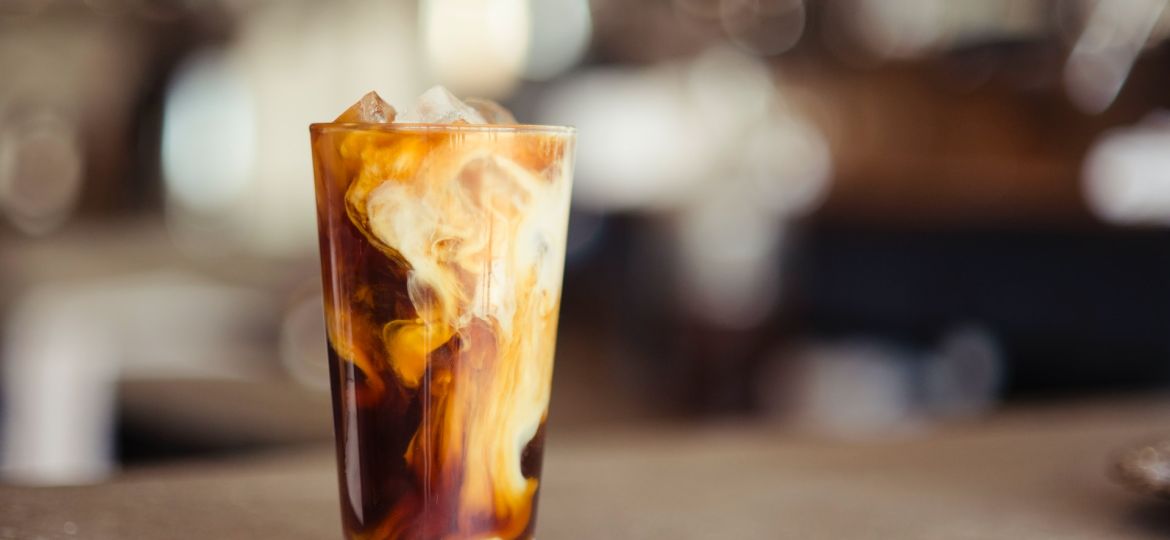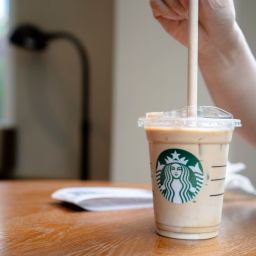
Cold brew coffee, known for its smooth and mellow flavor, is a unique method of coffee preparation that diverges significantly from traditional hot brewing techniques. Unlike hot coffee, which is brewed quickly using hot water to extract flavor and caffeine, cold brew is made by steeping coarse coffee grounds in cold water for an extended period, typically 12 to 24 hours.
This slow extraction process results in a coffee concentrate that is less acidic and bitter, offering a different taste profile and experience for coffee enthusiasts. The versatility of cold brew also stands out, as it can be served chilled or hot, providing a refreshing alternative to the conventional hot coffee, especially during warmer months.
Key Takeaways
- Brewing Ratios: Cold brew requires a higher coffee-to-water ratio compared to hot brewing methods, often around 1:4 to 1:8, which is key to achieving its signature taste and strength.
- Flavor Concentration: The extended brewing time allows for a deep extraction of flavors, creating a rich and smooth coffee concentrate that is distinct from hot brewed coffee.
- Comparison with Other Methods: Unlike the quick extraction in hot brewing, cold brew’s prolonged process uses more coffee grounds, impacting the overall consumption of coffee.
- Serving Flexibility: Cold brew can be diluted with water or milk to suit individual preferences, affecting the perceived strength and flavor profile.
- Economic Considerations: The increased coffee-to-water ratio in cold brew might influence overall coffee usage and cost, particularly in commercial settings or for regular home brewers.
Does Cold Brew Use More Coffee?
Yes, cold brew does use more coffee compared to traditional hot brewing methods. The essence of cold brew lies in its brewing process, which involves steeping coffee grounds in cold water for an extended period. This method requires a larger quantity of coffee to ensure a robust and flavorful concentrate.
Typically, the coffee-to-water ratio for cold brew ranges from 1:4 to 1:8, significantly higher than the ratios for hot brews, which are usually around 1:15 to 1:17. The result is a concentrated brew that can be diluted with water or milk, but the initial brewing process undeniably consumes more coffee grounds. This increased usage reflects the trade-off for cold brew’s distinct smoothness and reduced acidity, appealing to those who seek a gentler, yet flavorful coffee experience.
Understanding the Brewing Process
The cold brew process is fundamentally different from hot brewing methods. It begins with coarsely ground coffee beans that are soaked in cold water for 12 to 24 hours, allowing a slow and gentle extraction of flavors. This method contrasts sharply with hot brewing, where hot water extracts flavors and oils quickly, typically in a few minutes. The slow extraction in cold brewing not only enhances flavor but also minimizes the bitterness and acidity often found in hot brewed coffee.
Since the process does not involve heat, it requires more coffee grounds to achieve the desired strength and flavor profile. This method results in a concentrate that is often diluted before serving, providing a customizable coffee experience that can be tailored to individual preferences. Understanding this nuanced brewing process is key to appreciating why cold brew demands a higher ratio of coffee to water, making it a unique and cherished method among coffee aficionados.
Coffee-to-Water Ratios in Cold Brew
When it comes to brewing coffee, the coffee-to-water ratio is a crucial factor that influences the strength and flavor of the final cup. In cold brew, this ratio is markedly different from that of hot brewing methods. Typically, cold brew ratios range from 1:4 to 1:8 coffee to water, meaning for every one part of coffee, you use four to eight parts of water. This is a stark contrast to hot brewing methods, where the ratios usually hover around 1:15 to 1:17.
Why does cold brew require more coffee? The answer lies in its brewing process. Cold water extracts flavors more slowly and less efficiently than hot water. To compensate for this and achieve a rich, full-bodied flavor, more coffee grounds are needed. While this means using more coffee beans, the result is a concentrated and versatile coffee that can be enjoyed in various ways, tailored to personal preference by adjusting the dilution level.
The Impact of Concentration Levels
The concentration of cold brew coffee is a significant factor that affects not only the taste but also the amount of coffee used during the brewing process. The desired strength of cold brew can vary widely among individuals and establishments, leading to variations in the coffee-to-water ratio.
For those who prefer a stronger, more intense cold brew, the ratio leans towards the lower end, such as 1:4. This results in a highly concentrated brew that can be diluted with water or milk without losing its robust flavor profile. On the other hand, a milder cold brew might use a 1:8 ratio, yielding a less concentrated beverage that can be enjoyed as is or with minimal dilution.
Comparing Cold Brew with Other Brewing Methods
Cold brew stands out for its distinct brewing process and coffee-to-water ratio when compared to traditional hot brewing methods like drip coffee and espresso. While cold brew typically uses a ratio ranging from 1:4 to 1:8, drip coffee often employs a 1:15 to 1:17 ratio, and espresso is even more concentrated, with ratios around 1:2. However, espresso uses far less water, resulting in a smaller beverage that’s rich and intense.
The key difference lies in the extraction process. Hot water used in drip coffee and espresso extracts flavors and oils quickly and efficiently, allowing for less coffee to be used. Cold brew’s slow, cold water extraction requires more grounds to achieve a comparable flavor intensity and depth. This fundamental difference in brewing technique and coffee usage underscores the varied experiences each method offers, from the robust intensity of espresso to the smooth, nuanced flavors of cold brew.
FAQs
Can I use less coffee to make cold brew?
Using less coffee will result in a weaker brew. For a balanced flavor, adhere to recommended ratios, but feel free to adjust slightly based on personal taste preferences.
How does the grind size affect the amount of coffee used in cold brew?
A coarser grind is ideal for cold brew to prevent over-extraction and ensure a smooth flavor. Finer grinds may lead to a bitter taste and are not recommended.
Can I reuse cold brew coffee grounds?
Reusing coffee grounds is not advisable as most of the flavors and essential oils are extracted during the first brew, resulting in a much weaker and less flavorful second batch.
Final Thoughts
Cold brew coffee’s unique brewing process and flavor profile necessitate a higher coffee-to-water ratio compared to traditional hot brewing methods. This distinctive approach, characterized by a slow extraction at low temperatures, requires more coffee grounds to achieve the desired strength and depth of flavor.
While this means using more coffee, it also allows for a customizable brewing experience, offering a versatile and enjoyable beverage that can be tailored to individual tastes. Whether you’re a seasoned coffee aficionado or a curious newcomer, understanding these nuances can enhance your appreciation and enjoyment of cold brew coffee.









